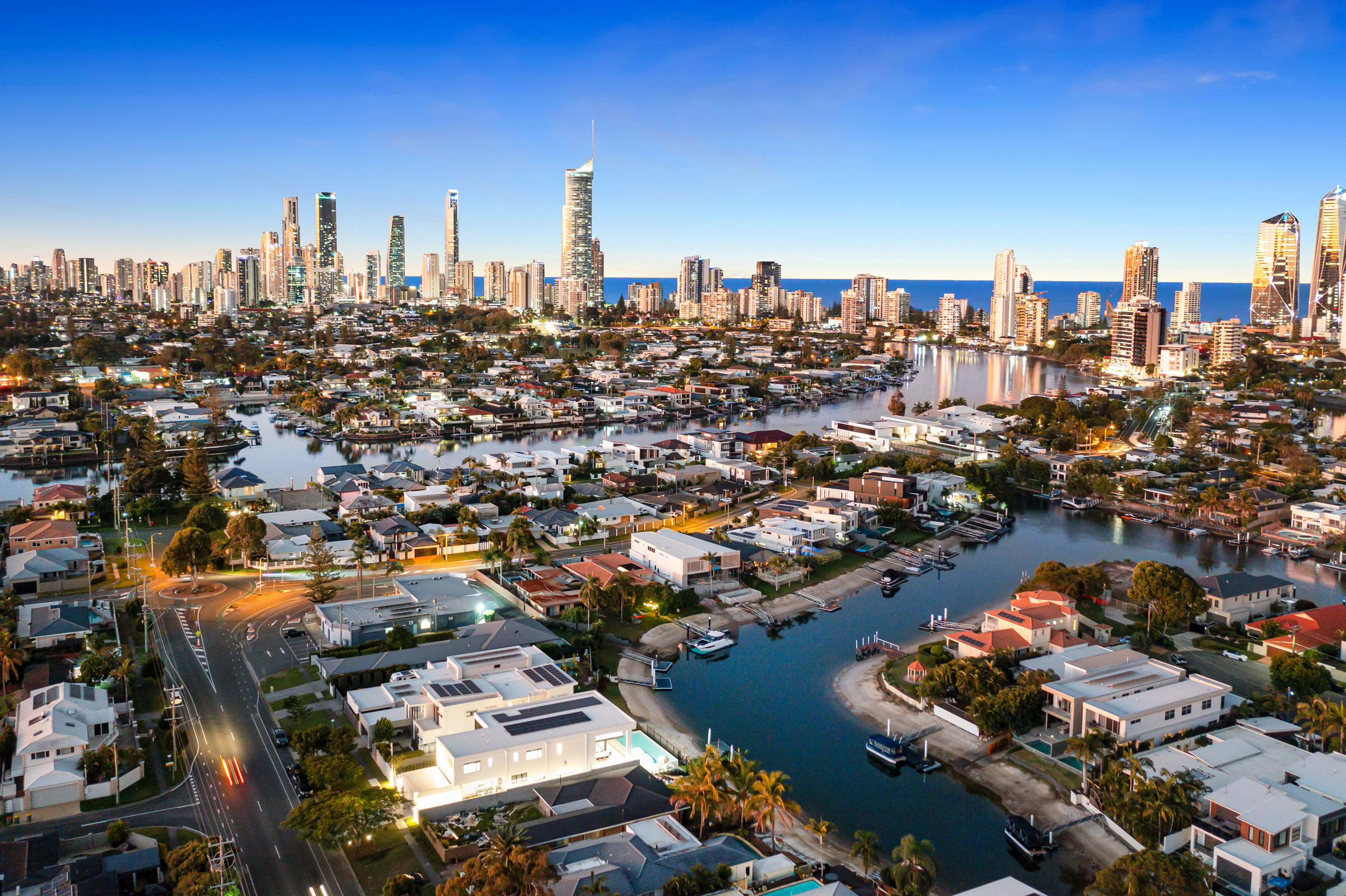The Future of Gold Coast Housing
April 10 2024

The state government’s plans to meet the housing needs of the Gold Coast over the next two decades will transform the city – but not necessarily in the way it wants.
The South East Queensland Regional Plan, also known as Shaping SEQ, sets mandatory housing targets that councils in the region, including the Gold Coast City Council, must meet.
Those targets, say proponents, are all but impossible, and have many wondering what lies in store for our city.
Few would be across the plan and its implications as well as David Ransom, director at Zone Planning Group, headquartered at Robina.
As David outlines, the plan has set the target of 100,254 apartments in towers of nine storeys or more by 2046. That’s 4010 more apartments on the Gold Coast every year.
Meanwhile, 11 per cent (17,787) will be detached housing, 17 per cent (27,489) low-rise homes and 10 per cent (16,170) medium-rise apartments.
“The real standout is the proportion of housing that is anticipated to be in high rise,” David says. “It’s a very, very high proportion.”
THE COST BARRIER
David identifies two main issues with achieving these targets.
“First of all, to build 100,254 apartments in buildings more than nine stories involves an inherently expensive form of construction,” he says.
“And it’s reflected in the fact that in this city right now anyone who’s building that type of product is having to sell for a very high price to keep in front of escalating build costs.”
David says while the current construction crisis fuelled by material costs and labour shortages would not last forever, “prices rarely come down”.
“So, is it plausible that in the short to medium term we are going to be able to build high-rise buildings that people on low and middle incomes can afford to buy?” he says.
“The answer to that is ‘no’.” That sentiment is echoed by Kollosche Commercial sales agent Adam Grbcic, who works closely with developers to identify and amalgamate viable sites across the city.

He says the Gold Coast has experienced a cultural shift towards apartment living that stems from a combination of units being the main stock available and the scarcity of centrally located greenfield sites.
“There are a lot of Development Application (DA) approvals that have incorporated three to four levels of basement parking on sites that are sub 700m2, which feedback suggests cannot stack up due to the construction costs versus units yielded on sites of that size,” he says.
WHERE IS THE LAND
The other gap in the plan, as David sees it, is land availability as the most affordable housing is constructed with a slab on ground: detached and semi-detached homes, and townhouses.
“The plan is saying that a combined 28 per cent of our housing needs up until 2046 – some 45,000 dwellings – are going to be detached or low-rise detached, so duplexes, townhouses,” he says.
“The problem is there’s another aspect of the plan, which is the urban footprint, the hard line on a map that tells you where urban development can occur and where it is prohibited.
“In my estimation and based on a report conducted by our business and colleagues in the development industry last year, there’s not enough land to construct that number of slab-on-ground homes in the city. We don’t think that land exists.”

The targets for this category of housing will mean getting back into the established parts of the city and knocking over houses and townhouses, which is a hard thing to do, according to David.
“And it’s very difficult to amalgamate sufficiently and to do that at scale,” he says. David says an oversight in the plan was not looking at expanding the urban footprint.
“There are areas in the city that could be developed for low-rise, detached dwellings that don’t have environmental constraints and don’t have natural hazard constraints such as flooding,” he says. “But they do have access to shopping centres, schools, sewer treatment, plants, roads, railway stations, all of those things.
“There are parts of the city that are well located, but outside the urban footprint and therefore they cannot be developed to satisfy our growing population.”
Adam says there is a growing number of Gold Coasters who either don’t own a car or use one rarely, which made public transport accessibility more important.
A CITY OUT OF BALANCE
Regardless, David says, without an adequate supply of housing for low and middle-income earners, “then we’re going to end up with a city that does not have a well-balanced economy”.
“There’s going to be consequences for that,” he says. “It might be that industrial businesses in the city cannot find staff because while people want to work for them, they cannot find housing they can afford anywhere near where those businesses are. That’s already happening.
“But it could get a lot worse. Your whole economic development strategy for the city could end up going nowhere because you don’t have housing to support the right type of people to fulfill the jobs.”

Adam agreed, saying many of the buyers he works with have the location at the top of their list.
“A major consideration for their new locations is accessibility for staff and desirability to work in those precincts,” he says.
“A good example is Burleigh Heads, which has had substantially higher growth than other industrial precincts thanks to its location and proximity to the ocean, main roads and amenities.”
ShapingSEQ is now the region’s development road map, and our city council must work with it. There is little doubt it will change the Gold Coast markedly, but whether that will be for the better or worse, only time will tell.
David and Adam dive deeper into the gaps and solutions for the future of Gold Coast housing and development – Listen to the podcast.